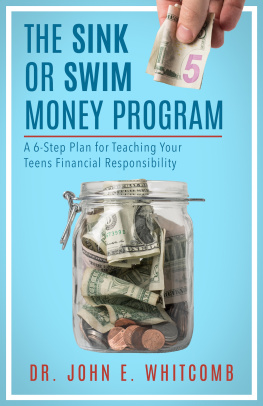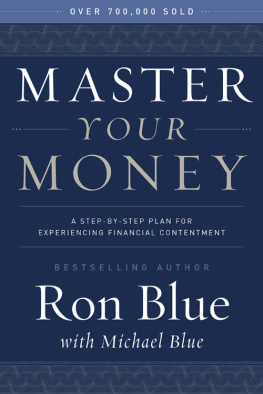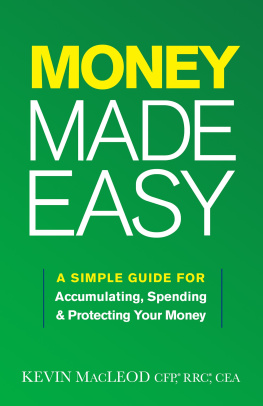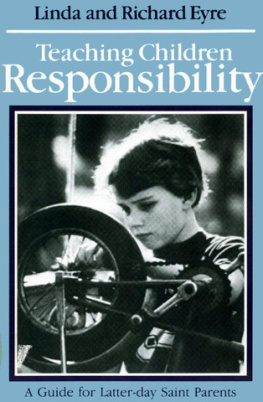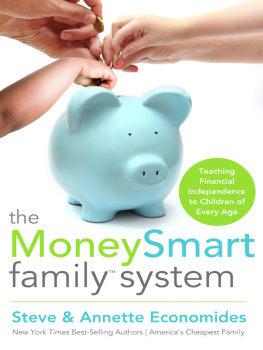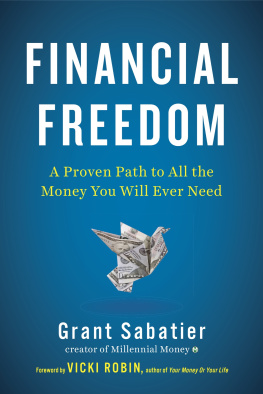The Sink or Swim Money Program
A 6-Step Plan for Teaching Your Teens Financial Responsibility
Dr. John E. Whitcomb
Dedication
To my parents, Bill and Dorothy Whitcomb, who believed in their children, always trusting that we could and would succeed, and that the measure of all our successes would be what we were able to give back.
Acknowledgments
This book is a creation of kindness.
Mary Ihde, working next to me in my day job, patiently heard idea after idea and gave gentle encouragement and patient suggestions. Jeff Stevenson kept insisting I write my ideas down. Mark Covaleski, Professor of Managerial Accounting at the University of Wisconsin-Madison, took my manuscript and gave me great encouragement at the beginning when the writing was its most raw. Flip Troiano read very raw versions and just assumed it would get done. John Burkhalter gave great feedback. Linda and Dave Schnable and Tom and Kim Larson believed I could finish the book. Kathy Ledvina came up with the name. Beth Meyer gave me the resolve to trust my instincts. My special gratitude goes to my cousin Joanne Tenaglio who spent hours and hours designing my superb Web site.
Many friends shared their families experiences with humor and insight. Mike Hargarten showed a clear instinct for the love of his family and how kindness works in addition to consequences. Pat Green told me story after story about her capitated kids. I beg forgiveness from the dozens of families whose ideas and encouragement are part of this book but who are not mentioned here by name. They tried out the Capitation Method, and wrote and e-mailed me with their successes and ideas. I trust that the skills their kids learned are some token of my gratitude.
Chris Roerden nourished the first edition as a friend and mentor. She is an editor for any new writer wanting to create a book. Popcorn Press is a special publishing company whose publisher, Susan Pittelman, produced a book any author would be proud of. Christopher Franks, an intern at Popcorn Press from the University of Wisconsin-Milwaukee, painstakingly reviewed every page, every reference, and every dangling participle, making the chapters hang together rather than separately. His care and tact this early in his career bodes well for many future authors. Georgene Schreiner made the text come alive with her caring and patient design and revisions. And Carolyn Kott Washburne proved that a great editor can take a good book and make it great.
But it all started with Holly, my spouse, my friend, and my creative conscience. She taught me, by gentle example, to take artists datestime apart to express my creative side, the spirit of the divine within each of us. Holly showed me by her skillful authorship that a book is within reach and believed I could do it. And with my children, who rolled their eyes each time I began another fiscal fable, and patiently put up with the ideas and experiments of a restless and loving father. They are in this book more by allegory than by fact. I owe much gratitude to them.
Since writing the first self-published edition, people who believed in the vision of changing the way we raise kids seemed to step up, grab this idea we (collectively) have had, and help make a team effort to push it forward into public consciousness. A book isnt done with just the writing or the editing. An idea goes nowhere when its only an idea. It requires getting out there, publicity. Bob Potter, former host of Minnesota Public Radio, recognized a new and creative idea and called it the best in his foreword when the book was a tiny, little project. Sandy Balzo, my publicist, picked up the idea, started her own kids on budgets, and had an instinct for the bigness of the concept. Daniel Greenberg, my agent from James Levine Communications, was another person of quick intuition, insight, and focused attention. The idea was finally birthing on the public stage and partnering at the next level was now his ken. When I asked for the editor who would best enjoy the fun of creating, Daniel pointed me to Jane von Mehren. To Jane, to Daniel, to Oprah, to Candi, to Sandy, to Bob, this is your baby, too. Thank you.
To America, this book is not a book written by an author who is an expert on money but a fellow parent on the imperfect path. As one parent said to me on taking me aside, Someone finally wrote a book about just plain good parenting and what good parents do with kids and money. Not perfect kids, just good kids. To each of you who help raise one child with insight and maturity in regards to money, so they become adults who can get past money to what life is really about, I thank you for honoring me with your belief in the idea.
Foreword
As the creator and host of the Sound Money program for fifteen years (1985 to 2000), I have received many calls from parents who want to help their children develop a sense of financial responsibility. The Sink or Swim Money Program, by Dr. John Whitcomb, is by far the best kids and money book Ive come across.
Far too many students come out of college many thousands of dollars in debt. They take on that debt without a clue about whats involved in paying it back. Some will have kids of their own in college before their own college loans are repaid. The time to begin teaching kids about serious money management is in the teen years, and thats exactly what The Sink or Swim Money Program does. The premise of the book is that teens need to be taught how to be financially responsible. This is something not taught in school, and its a critical life skill! And the best way to teach children is through their own experiences, in the safety of their homes, and under the guidance of their parentsparents who have a clear vision of what they want for their children.
The Sink or Swim Money Program gives you the tools to make that vision concrete. You will read about teaching your teens to make budgets, anticipate large expenses, plan for rewards, and see the planning played out. The final chapters present a step-by-step methodology for gradually increasing the level of responsibility your teens assume and the sophistication of their financial tools.
You will also laugh along with Whitcomb as he describes his own and his teenagers foibles. Who among us has not seen carefully planned budgets come apart under the strain of the unexpected events of everyday life? At great expense we have learned how to dig out and carry on. Whitcombs fiscal fables will help you to incorporate your own experiences into the process so that your teens can learn from your mistakes as well as from their own.
But it doesnt stop there. The Sink or Swim Money Program presents far more than the details of teaching kids how to manage money. It embraces the values of hard work, careful planning, charitable giving, and living within your personal means.
Whitcomb writes in a voice that is compassionate yet clearheaded, and he helps empower young people instead of dumbing them down at a time when they are yearning for more freedom and responsibility. This book will help you to help your children become hardworking and productive, generous and kind. You and your children will be grateful.
Bob Potter
Former Host, Minnesota Public Radios Sound Money
Senior Advisor, JNBA Financial Advisors,
Bloomington, Minnesota
PREFACE
Historical Roots
Money, in one form or another, has been around ever since human beings found that cowry shells from the beach could be traded for a bunch of coconuts. Only in the last generation have the number and complexity of financial transactions multiplied in our lives. Children who grew up with a stay-at-home mom in a home defined by home-cooked meals, home gardens, and local neighborhoods did not need much more than an allowance. The advent of families with two working parents, neither of whom cooks, sews, or stays at home much, in conjunction with spreading suburban neighborhoods and advertising-driven consumption, means that teens today have a dizzying array of financial options and responsibilities before them.

